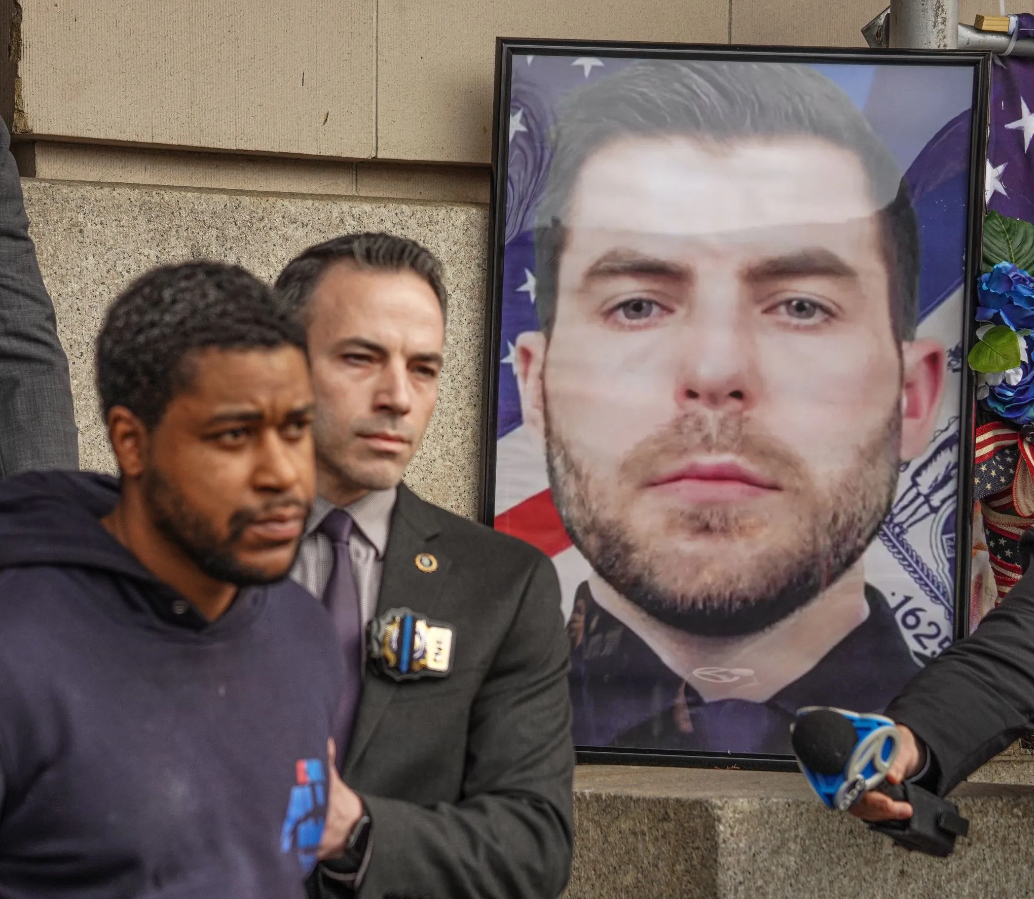
BY JERRY TALLMER | No two men could have been more unalike than José Quintero and Theodore Mann, who together gave birth, not just to the Circle in the Square but to the whole big, blooming Off Broadway theater of our times, though they didn’t know it at the moment of conception,
It took a Brooks Atkinson to make that happen.
Quintero was — well, an upper-class poetic Panamanian butterfly touched with the genius of Oscar Wilde — while I always thought of Ted Mann as a dark and brooding Jewish capo di capi.
They had two things in common: Love of theater and fear of father. José’s papa, a severe, blue-blooded generalissimo of some sort, wanted his offspring to become a doctor. Ted Mann’s Brooklyn lawyer father (and jazz club owner), Martin Goodman, wanted son Theodore to follow in pop’s legal footsteps. On return from two years (1943-45) as a sergeant in the U.S. Air Force medical corps, Ted worked his way through Brooklyn Law School, but that was that.
José Quintero and Ted Mann, both born in 1924, are both gone now — José in February 1999, Ted on this just-past February 24, 2012, of pneumonia, at age 87. They had met in 1950 in Woodstock, New York, where the following year they put on a show for $500 at Woodstock’s Loft Players, and thereupon decided to come back down to Greenwich Village and keep staging plays.
In 1951 I was a lost soul in Greenwich Village, listening to baseball while trying to figure out what to do with the rest of my life. One day I got a call from someone named Ted Mann. Could he come to see me? When he arrived it turned out he was seeking publicity. Maybe I could write something somewhere about his hunt for a space in which to start a theater. He seemed to have a chip on his shoulder. I was distinctly not impressed. I thought: This is going nowhere — and boy, was I wrong.
Theater-in-the-round was an “in” thing then, and Ted and José found just such a locale — a dead-and-gone nightclub — accessible only through a next-door brownstone hard by the subway entrance at the corner where West Fourth Street cuts past Sheridan Square, a pebble’s throw from the now long gone smoky, buzzing actors’ and writers’ hangout called Louis’ Tavern.
There, in that small Circle in the Square space, with Mann as producer, Quintero as director, they came up for an opener with “Dark of the Moon,” a spooky, silly, pseudo-rustic kettle of fish.
But there too, on April 24, 1952, mark it well, they brought forth a revivification of “Summer and Smoke,” the tingling, sensitive Tennessee Williams drama that had struggled to hold an audience on Broadway only four years earlier. The lead actress of their own production was an extraordinary and little-known Geraldine Page as Alma Winemiller, a virgin on the verge who wants the young stud who once panted after her (actor Lee Richardson) to know that the tables are now turned — “the tables are turned with a vengeance.”
One member of the audience that evening happened to be Mr. Brooks Atkinson, the gentlemanly but all-powerful theater critic of The New York Times. His review, the next morning, made a star of brilliant Geraldine Page, a hit of the Circle in the Square’s “Summer and Smoke,” a laurel wreath for director José Quintero, a reputation rejuvenated for Tennessee Williams — and a red light turning Green for Go for an Off Broadway movement the likes of which hadn’t been seen since the halcyon 1920s of Eugene O’Neill and the Provincetown Playhouse. Suddenly, Off Broadway theaters were popping up like mushrooms — block that metaphor! — downtown, uptown, all around town. And from that day to this… .
If Tennessee Williams could be brought back to new life, why not another American playwright whom Quintero, for one, had always worshiped? Why not Eugene O’Neill, whose mordant “The Iceman Cometh,” with its mildly salacious double-entendre title, had also failed to grip a Broadway audience despite a Hollywood cast half-a-dozen years earlier?
It is a very long play, “The Iceman Cometh.” And it goes on and on forever, there in Harry Hope’s saloon full of old rummies and has-beens and whores and philosophers, until, something like four or five hours into the show, Hickey the spellbinder (blazing Jason Robards, Jr.) peels away the coating to reveal truth and death and murder and mania, all wrapped into one.
All this required what for Off Broadway was a huge roster — nineteen speaking parts, but many more than nineteen actors over the two-year run of José and Ted’s smash-hit “Iceman” revisited.
One of the few survivors of that era is Sylvia Miles, a working actress to this day, who 48 hours after the opening went into the show in the role of Pearl, a hooker, when Patricia Brooks, Ted Mann’s actress/singer wife, fell and broke a leg.
“And I gave her my old, dyed black, fur coat when she had an audition uptown,” Ms. Miles remembers — but then Sylvia Miles remembers everything, notably including the fact that the pay was a nonunion $25 a week and that she, Sylvia, is “the only person to have acted at all three Circle venues, Sheridan Square, Bleecker Street (in Jean Genet’s ‘The Balcony’), and uptown on 50th Street (‘Night of the Iguana’).” Not to mention a “Camino Real” directed by Quintero at the St. Mark’s Playhouse, Second Avenue at Eighth Street.
She also remembers this about Ted Mann:
“Very sharp, very smart. His father the club owner was a successful New York operator. It’s a sleazy business. Ted didn’t come out of nowhere. He came out of a background. He knew what he was doing. He was nice, but he wasn’t nice all the time. His personality changed when [in 1972] he and the Circle went uptown to Broadway. No guy that runs a nightclub or is a producer can be a great guy.”
Jerry Stiller, who goes back a ways himself, never worked at Circle in the Square but did do a reading, in the presence of producer Mann, for the role that would make a star of Peter Falk, that of Rocky the bartender.
“I didn’t read well. I never read well,” says Stiller all these years later. “I said to Ted Mann: ‘I don’t read well,’ and he just said, straightforwardly: ‘No, you didn’t.’ ”
Let’s add it up. I mean, the guy produced some 250 works, with and without José Quintero, mostly with and mostly worthwhile stuff. I particularly remember, early on, a lovely rendition of Dylan Thomas’s “Under Milkwood,” directed for the Circle by Bill Ball, and a corny, swashbuckling “Children of Darkness” that threw together those warring lovebirds Colleen Dewhurst and George C. Scott.
Mann directed a certain number of plays and operas himself, though the really important pieces he left to José. In any event, every first-class American actor or actress of the past 60 years has come to us through Joe Papp’s Public Theater or Douglas Turner Ward’s Negro Ensemble Company or Lee Strassberg’s Actors’ Studio or Ted Mann and José Quintero’s Circle in the Square and its Circle Theater School, or any combination of the above.
If that isn’t love it’ll have to do until the real thing comes along.

















